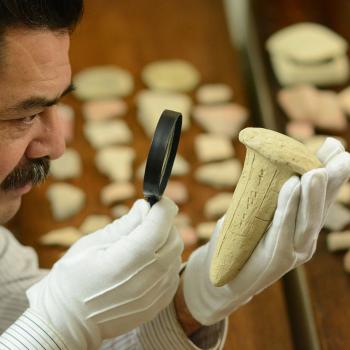 Are opponents to cloning racist? This question came to my mind while watching the science-fiction film The Creation of the Humanoids. The movie is set against a background of a post-nuclear war disaster, which destroyed over ninety percent of humanity; moreover, the human race is no longer able to procreate at a replaceable level because of radiation; so, the population continues to decrease in numbers. As a result, scientists create highly advanced, blue-skinned and silver-eyed humanoids of superior logical capacities to assist humans. Opposition to the humanoids emerges based on the fear that the humanoids will eventually be able to take over and even decimate humanity. The effort is made by what the film portrays as a supremacist organization to hold in check the humanoids’ advance through bombings and other violent means, yet to no avail. Eventually, science is able to transfer the essential features of humanity from recently deceased humans to exact humanoid replicas. The transfer is called a “thalamic transplant” about which a scientist says, “We draw off everything that makes a man peculiar to himself. His learning, his memory: these, inter-reacting, constitute his personality, his philosophy, capability and attitude. The human brain is merely the vault in which the man is stored.” In the end, such creatures are able to reproduce, thus eventually replacing humanity.
Are opponents to cloning racist? This question came to my mind while watching the science-fiction film The Creation of the Humanoids. The movie is set against a background of a post-nuclear war disaster, which destroyed over ninety percent of humanity; moreover, the human race is no longer able to procreate at a replaceable level because of radiation; so, the population continues to decrease in numbers. As a result, scientists create highly advanced, blue-skinned and silver-eyed humanoids of superior logical capacities to assist humans. Opposition to the humanoids emerges based on the fear that the humanoids will eventually be able to take over and even decimate humanity. The effort is made by what the film portrays as a supremacist organization to hold in check the humanoids’ advance through bombings and other violent means, yet to no avail. Eventually, science is able to transfer the essential features of humanity from recently deceased humans to exact humanoid replicas. The transfer is called a “thalamic transplant” about which a scientist says, “We draw off everything that makes a man peculiar to himself. His learning, his memory: these, inter-reacting, constitute his personality, his philosophy, capability and attitude. The human brain is merely the vault in which the man is stored.” In the end, such creatures are able to reproduce, thus eventually replacing humanity.
The Creation of the Humanoids was released during the 1960’s Civil Rights struggle (exact date unknown, though somewhere between 1960 and 1962). Science-fiction is a genre well-suited to addressing pressing cultural and ethical issues that a society might otherwise fail to engage. The movie is striking on a variety of levels, including its bearing on racism. While the rudimentary film sets reflect low-budget expenses, the movie is high on cultural and philosophical value. In fact, it is claimed that The Creation of the Humanoids was Andy Warhol’s favorite movie. Thus, it must be of great value; if it’s good enough for Warhol, it’s good enough for me!
Regardless of whether or not you are into Warhol, you should be interested in the questions the film raises. The film’s focus on the conflict between humans and humanoids (especially reanimated humanoids that can reproduce) bears upon the question of racism. From one angle, if, as the film conveys, the brain is simply the vault where human life is stored, humans are nothing more than matter. If humans are nothing more than matter, then humans are not better than humanoids that are reanimated humans, especially those that can reproduce. Thus, KKK-like actions against the humanoids should cease. The moral of the story might be: don’t judge humanoids by the color of their skin or eyes; color is only a secondary quality (which can be altered in the case of the humanoid robots), not a primary quality like brain power or reproduction. Of course, that is not the same thing as Dr. Martin Luther King, Jr’s views concerning various human ethnicities and the like: judge someone not by the color of their skin, but by the content of their character; moreover, all people are equal because they are created in the image of God, thereby having inherent dignity and worth. Regardless of these differences, the film appears to call into question racial prejudice.
Now let’s reflect upon the film’s suggestive power from the reverse angle. Whether or not the film is intended to turn the tables on humanity and call for the technological development of a superior species, the thought did cross my mind. If humanoids who are reanimated and reproducing humans are superior based on their super-human logic, learning and memory, as well as their reproductive capacities (at a time when humans are unable to replace themselves at sufficient rates due to nuclear radiation’s permanent effects, as disclosed in the film), then the moral of the story might be: don’t judge humanoids by the color of their skin or eyes, but by the content of their brain cells and reproductive prowess. Let’s bring it closer to home: the film might be taken to suggest that we should judge humans by their intellectual and even their reproductive capacities.
While fictional, science-fiction is not always far-fetched; sometimes it can point to the future of science and science’s bearing on ethical issues. Take for example recent concerns over eugenics: cloning could be used in the attempt to multiply people deemed by influential sectors of society as having “desired traits” to the exclusion of those with “undesirable traits;” also, take for example recent concerns over genocide: cloning could be used for genetic manipulation to produce better children: a new species or sub-species might arise that would view its predecessors as inferior and fit for “slavery” or worse “slaughter” (see “Protecting the Endangered Human: Toward an International Treaty Prohibiting Cloning and Inheritable Alterations,” in American Journal of Law and Medicine, vol. 28 (2002): 162). Whatever one makes of the ethical concerns, there is no question that the science pertaining to cloning is advancing, as The New York Times “Chronology of Coverage” indicates.
Many of us would instinctively be concerned over the presumed threat of genocide resulting from the development of a superior sub-species or species of humans by artificial or technological means. But if it benefits a particular class or demographic of powerful humans financially or politically to proceed with such envisioned scientific developments, what would keep them from doing so? Would humanitarian considerations involving belief in the fundamental equality of all humans as created in God’s image as soul bearers safeguard against a certain sector of humans from proceeding with such apparent advances? However, for the sake of argument, if there is no God or human image of God involving the soul, and the mind is the brain, would it be all right to proceed with cloning technology toward this end? What do you think, and why?













